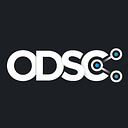The Five Best Frameworks for Data Scientists
There are many tools that can help you when you start your data science career. Some of these tools you will be using them almost in every new project. In this post, we present you five tools and technologies that can help you to immerse in the data science world and will be handy for machine learning or big data problems.
Scikit-learn
Scikit-learn is a very popular and very well documented open-source machine learning library of algorithms, with the goal of providing a set of common algorithms to Python users through a consistent interface. It’s quickly becoming a go-to framework for machine learning, as it’s constantly evolving with new models, efficiency improvements on speed and memory, and large data capabilities. Although scikit-learn is generally used for smaller data, it does offer a decent set of algorithms for out-of-core classification, regression, clustering, and decomposition.
As of October 2018, the expected average salary is nearly $140,000 annually, with major names such as Amazon, IBM, among others actively seeking data scientists specializing in it.
Pandas
Pandas is a Python package designed to do work with “labeled” and “relational” data simple and intuitive. Pandas is a perfect tool for data wrangling, designed for quick and easy data manipulation, aggregation, and visualization. An easy way to think of Pandas is by simply looking at it as Python’s version of Microsoft’s Excel.
Pandas excels with practical data analysis in finance, statistics, social sciences, and engineering. Pandas works well with incomplete, messy, and unlabeled data (i.e., the kind of data you’re likely to encounter in the real world), and provides tools for shaping, merging, reshaping, and slicing datasets. Many analyst and Python specialist jobs look for people who are well-versed in Pandas.
TensorFlow
Developed by Google just a few years ago, TensorFlow is an open source software library for numerical computation using data flow graphs. Nodes in the graph represent mathematical operations, while the graph edges represent the multidimensional data arrays (tensors) communicated between them.
TensorFlow is arguably one of the best deep learning frameworks and has been adopted by several giants such as Airbus, Twitter, IBM, and others mainly due to its highly flexible and modular system architecture. Of course, considering it was developed at Google, engineers there are constantly updating it and adding more features. Don’t expect TensorFlow to lose steam anytime soon.
Apache Kafka
Apache Kafka is an open source distributed streaming platform capable of handling trillions of events a day in real-time. Initially conceived as a messaging queue, Kafka is based on an abstraction of a distributed commit log. Since being created and open sourced by LinkedIn in 2011, Kafka has quickly evolved from messaging queue to a full-fledged streaming platform.
Kafka powers many name brands, including Netflix, Airbnb, LinkedIn, and others. It’s a popular framework because it makes it possible to provide and access massive volumes of data from multiple internal platforms. Think of it as the backbone of data exchange, serving multiple platforms and processes that use different types of data.
Jupyter Notebooks
The Jupyter Notebook is an incredibly powerful tool for interactively developing and presenting data science projects. A notebook integrates code and its output into a single document that combines visualizations, narrative text, mathematical equations, and other rich media. The intuitive workflow promotes iterative and rapid development, making notebooks an increasingly popular choice at the heart of contemporary data science, analysis, and increasingly science at large.
The Jupyter Project benefits from a large community of contributors, partnerships with many companies (Rackspace, Microsoft, Continuum Analytics, Google, Github) and universities (UC Berkeley, George Washington University, NYU.) These big names involved help ensure that Jupyter is constantly growing.
Bonus: SQL
We’d be remiss to not at least mention the world’s most widely used database language. SQL is the standard language for relational database management systems. SQL statements are used to perform tasks such as update data on a database, or retrieve data from a database.
As of October 2018, there are over 100,000 jobs looking for people who know SQL. This ranges from SQL developers to marketing professionals — analytics is important, regardless of industry or role. As companies are looking for data scientists more and more everyday, this number will only increase exponentially.
Conclusion
Your time is a limited resource, in this post we mention six useful tools and technologies that we hope will be useful for you to know. Scikit-learn and pandas are great python libraries to check out for machine learning. The TensorFlow framework will introduce you to graph computing and will allow you to learn and implement neural networks using this library. Apache Kafka will be useful for data engineering problems. Jupyter notebooks will allow you to test and interact with your code while developing machine learning models. And learning SQL code is a great way for you to integrate and query the structured data you use.
— — — — — — — — — — — — — — — — — —
Read more data science articles on OpenDataScience.com, including tutorials and guides from beginner to advanced levels! Subscribe to our weekly newsletter here and receive the latest news every Thursday.

